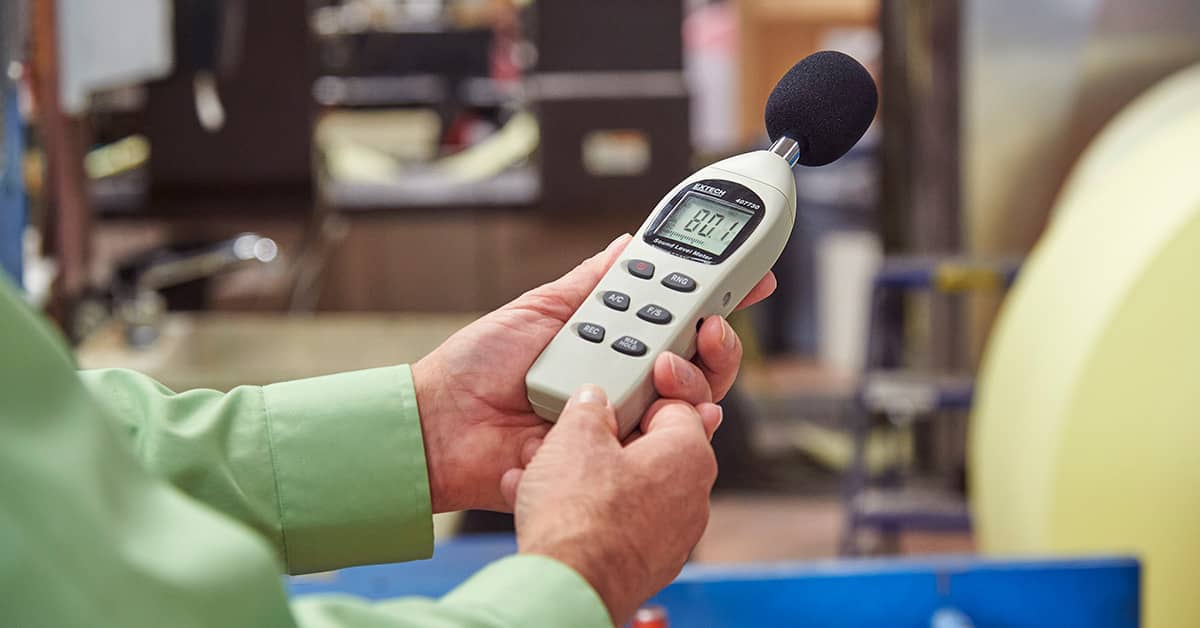How loud is too loud?
Date Posted: 04/08/2024

Every year thousands of workers suffer from preventable hearing loss due to high workplace noise levels. This can occur in a variety of industries, including manufacturing, construction sites, concert venues, and airports.
Noise can cause temporary or permanent hearing loss. Temporary hearing loss results from short-term exposures to noise, with normal hearing returning after a period of rest. Prolonged exposure to high noise levels causes permanent hearing damage and can cause other harmful health effects, such as increased blood pressure, headaches, and fatigue from the strain of talking and listening over the noise.
OSHA’s occupational noise standard requires employers to determine if workers are exposed to excessive noise in the workplace.
Noise monitoring
Sound is measured in decibels (dB). A normal conversation is about 60 dB, a washing machine is about 70 dB, and a motorcycle engine running is about 95 dB. Noise above 70 dB over a prolonged period of time may start to damage a person’s hearing.
OSHA requires employers to monitor noise exposure levels in a way that accurately identifies employees exposed to noise at or above 85 dB averaged over 8 working hours, or an 8-hour time-weighted average (TWA). The exposure measurement must include all continuous, intermittent, and impulsive noise within an 80 dB to 130 dB range and must be taken during a typical work situation.
Monitoring is commonly conducted using sound level meters and dosimeters worn by employees. Employees must be able to observe the monitoring and those exposed at or above an 8-hour TWA of 85 dB must be given the results of the monitoring.
Employers must monitor when there are significant changes in machinery or production processes that may result in increased noise levels to the extent that additional employees may be exposed at or above the action level, or when the attenuation provided by hearing protectors being used by employees may be inadequate. Many employers choose to monitor annually.
Reducing workplace noise exposure
OSHA expects employers to reduce employee exposures to hazardous noise levels through the use of engineering or administrative controls. Examples of engineering controls include:
- Installing a muffler on a machine,
- Making sure moving parts on machinery are properly lubricated, or
- Buying quieter equipment.
Examples of administrative controls include:
- Using job rotation from louder areas to quieter ones throughout the shift to lower employee’s exposure.
- Operating a noisy machine only during a shift when fewer people are exposed.
If these controls don’t reduce noise exposures to a safe level, employers must implement a hearing conservation program.
Elements of a hearing conservation program
A hearing conservation program includes:
- Monitoring workplace noise levels and informing employees of the results,
- Providing employees with free annual hearing tests and appropriate hearing protection,
- Training employees on the hazards of excessive noise exposure and how to properly use hearing protection,
- Conducting evaluations on the adequacy of the hearing protectors in use, and
- Maintaining appropriate records.
How Safety Management Suite Can Help
Keeping track of hearing conservation program elements can be a challenge. The Audits feature in J. J. Keller® SAFETY MANAGEMENT SUITE provides numerous ready-to-use checklists to help determine what’s required. Performing self-audits allows employers to identify and eliminate hazards and helps ensure they’re in compliance.
E-mail Newsletter
Sign up to receive the weekly EHS Insider email newsletter for safety articles, news headlines, regulatory alerts, industry events, webcasts, and more.